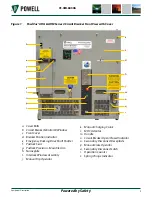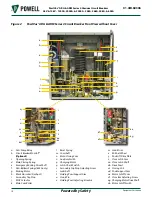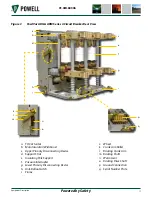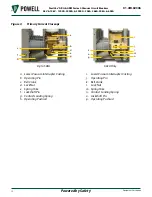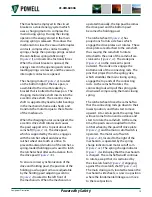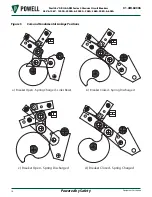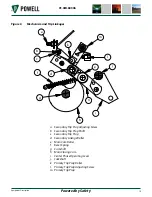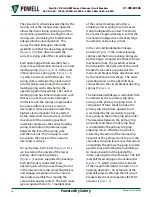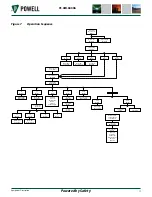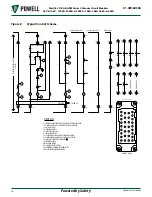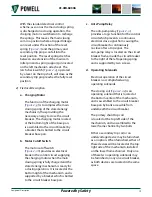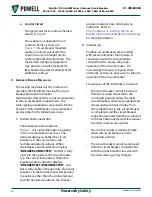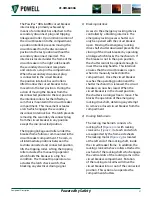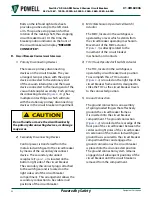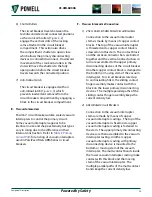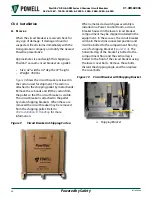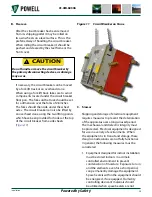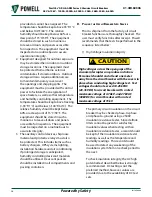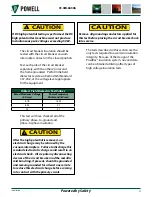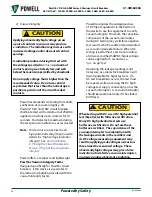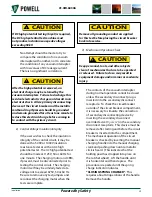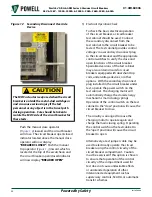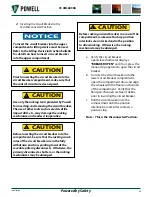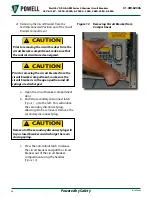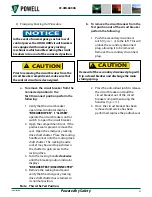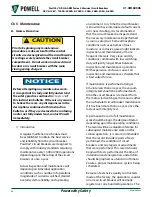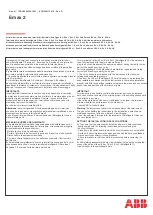
Powered by Safety
®
23
Equipment Description
01.4IB.60306
6) Shutter Rollers
The circuit breaker travels between the
test/disconnected and connected positions
as the crank arm rollers (
)
engage the vertical slots of the racking
cams attached in the circuit breaker
compartment. This action also drives
the compartment shutters to open/close
which allows the primary disconnecting
devices to connect/disconnect. Downward
movement of the crank arms rollers in the
slots will move the shutters to the fully
open position before the circuit breaker
travels towards the connected position.
7) Anti-Rollout Latch
The circuit breaker is equipped with an
anti-rollout latch (
prevents inadvertent removal from the
circuit breaker compartment by engaging a
block in the circuit breaker compartment.
e. v
AcuuM
I
nterrupterS
PowlVac® circuit breakers utilize sealed vacuum
interrupters to control the primary circuit.
Some vacuum interrupters appear to be
identical in size and shape externally, but types
vary in rating due to the differences in their
internal construction. Refer to
for a listing of vacuum interrupters
used in PowlVac ARG & ARM Series 4 circuit
breakers.
f. v
AcuuM
I
nterrupter
c
onnectIon
1) 25kA, 36kA, & 50kA Rated Circuit Breakers
Connection to the vacuum interrupter
stems is made by means of copper contact
blocks. The top of the vacuum interrupter
is threaded and a copper contact block is
screwed onto this stem. The contact block
and the vertical connector bars are bolted
together and the vertical connector bars in
turn are assembled to the upper primary
disconnecting devices of the circuit breaker.
Another copper contact block is clamped to
the bottom or moving stem of the vacuum
interrupter. For circuit breakers rated up
to and including 50kA, the sliding contact
finger assembly makes contact with this
block on the lower primary disconnecting
devices. The multiple parallel paths of the
sliding contact finger assembly keeps the
current density low.
2) 63kA Rated Circuit Breakers
Connection to the vacuum interrupter
stems are made by means of copper
vacuum interrupter castings. The top of the
vacuum interrupter is fixed and a copper
vacuum interrupter casting is fastened to
the stem. The upper primary disconnecting
devices are then assembled to the vacuum
interrupter casting. Another copper
vacuum interrupter casting with primary
disconnecting device is mounted to the
bottom or moving stem of the vacuum
interrupter. The multi-contact bands inside
the lower vacuum interrupter casting make
contact with this block and the moving
stem of the vacuum interrupter. The
multiple parallel paths of the multi-contact
bands keep the current density low.

